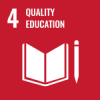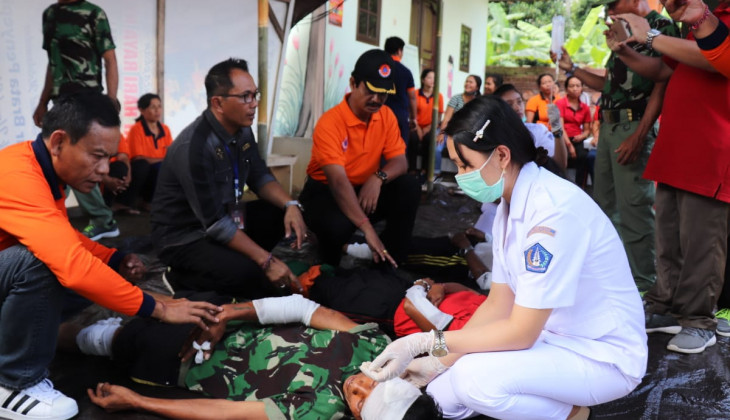Recently, the National Disaster Management Agency (BNPB) launched Disaster Preparedness Day (HKB). BNPB initiated this day by inviting people to spend a day conducting disaster preparedness exercises simultaneously on 26 April.
The initiative from BNPB to choose this day as Disaster Preparedness Day aims to cultivate an integrated, planned, and sustainable practice of training to increase public awareness, vigilance, and preparedness towards a Disaster-Resilient Indonesia.
Dr. Agung Harijoko, Head of the UGM Center for Disaster Studies, said that disaster preparedness is an effort to reduce disaster risk. The components of disaster risk include threats or hazards, vulnerabilities, and capacity.
Of the three components, according to him, improving capacity is one way to reduce disaster risk. One of the ways to increase this capacity includes increasing community preparedness.
“Preparedness must always be improved and generally carried out when the danger has not yet occurred,” he said at the UGM Campus, Tuesday (27/4).
He believes that the initiation from BNPB regarding Disaster Preparedness Day is important because it will remind everyone to keep improving preparedness at all times.
“The initiative to take the time for disaster preparedness will always remind us of the importance of increasing preparedness,” he said.
It often happens, according to him, when there is no threat of disaster people become careless. Meanwhile, disaster hazards come without warning. Therefore, to anticipate them, everyone is invited to maintain the spirit of preparedness by reminding each other.
He acknowledged that the Covid-19 pandemic, another type of disaster, has somewhat reduced preparedness for natural disasters. Natural disasters can come anytime, regardless there is a pandemic or not.
The Covid-19 pandemic has happened for a year and has not shown any signs of ending. This will lessen people’s focus on natural disaster preparedness. Meanwhile, there are new procedures that must be taken and harmonized in natural disasters preparedness during a pandemic.
“Therefore, if it is difficult to carry out joint exercises, at least every individual or one person within a family can prepare themselves for disaster preparedness independently. Experience teaches the ability to save oneself and reduce the number of victims, although that doesn’t mean ignoring the safety of others,” he explained.
Agung Harijoko emphasized that the community is usually better prepared to face disasters if there are frequent disasters in their area. This condition will be different from the area/region that has experienced a natural disaster with a recurrence period in a long time. This makes people forget that their area has also experienced a disaster.
“For example, in Indonesia so far, meteorological disasters are mostly in the form of floods, but tropical cyclones rarely hit the mainland, so preparedness is still low due to lack of anticipation,” he explained.
For this reason, he hopes that socialization and warnings of threats as well as propaganda for disaster preparedness must always be encouraged. It should continue to be held as propaganda to increase preparedness.
“Preparedness in a broad sense and to everyone. Because disasters can strike anyone,” he added.
Source: https://www.ugm.ac.id/id/berita/21064-upaya-penurunan-risiko-bencana



